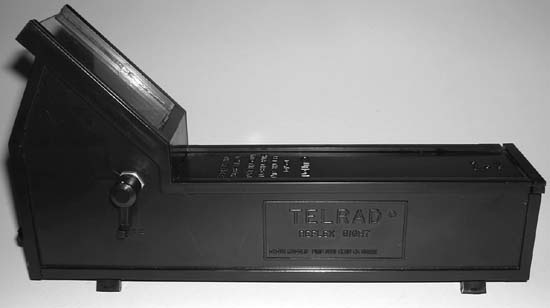Locate Objects Geometrically
You can find things quickly by reckoning from the easy-to-find objects, imagining some lines between them, and going in for the kill with a bulls-eye finder.
The human eye and brain are superbly evolved for detecting patterns. We see lines, angles, and patterns even where none exist, particularly when we look at bright stars against the velvety black background of the night sky. You can take advantage of this by creating imaginary lines and patterns on the celestial sphere, and using those lines and patterns to locate objects geometrically. Geometric navigation allows you to jump directly to objects in seconds rather than spend minutes tracking them down by following a path of dim stars.
A unit-power finder [Hack #53] like the Telrad (shown in Figure 2-15) is an essential aid to geometric navigation. The Telrad works like the heads-up gunsights in WWII fighter planes. When you look through the Telrad, you see a dim, red bulls-eye target against the background sky. The Telrad circles are 0.5°, 2°, and 4°, which means you can use a Telrad to locate almost instantly any object within 4° of a bright star or other easily identifiable object.

Figure 2-15. The Telrad unit-power finder
For example, letâs say you want to locate Messier Object 79 (M79), a globular cluster in the constellation Lepus, shown in Figure 2-16. You could track it down the hard way, ...
Get Astronomy Hacks now with the O’Reilly learning platform.
O’Reilly members experience books, live events, courses curated by job role, and more from O’Reilly and nearly 200 top publishers.

